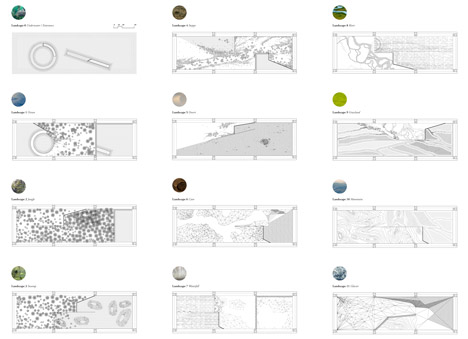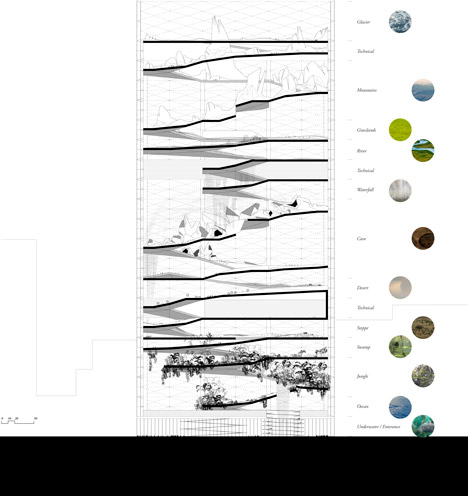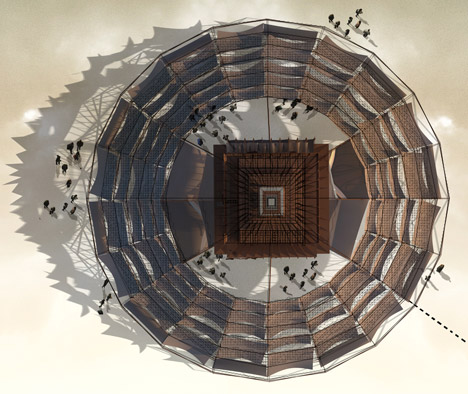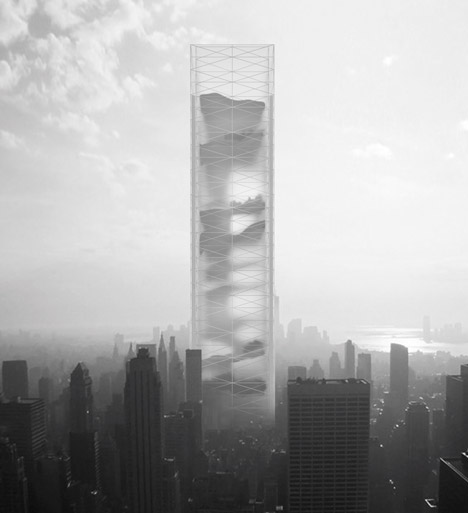
Essence Skyscraper
Named Essence Skyscraper, the proposal by Polish architectural designers Ewa Odyjas, Agnieszka Morga, Konrad Basan and Jakub Pudo was awarded first prize in the eVolo Skyscraper Competition, an annual ideas contest run by eVolo Magazine.
Essence Skyscraper
The designers, collectively known as BOMP, proposed a towering structure containing eleven different kinds of natural landscape, from rivers and waterfalls to deserts, grasslands and caves.
Their aim was to bring the natural landscape into the everyday lives of city dwellers, and create opportunities for adventure.
Essence Skyscraper plans
"The main goal of this project is to position non-architectural phenomena in an urban fabric," they said, "an inspiration rooted in nature allowed to form a representation of external worlds in the shape of a vertical structure."
"Away from everyday routines, in a dense city centre, a secret garden that combines architecture and nature is born."
Essence Skyscraper sections
The prize was judged by a panel that included architects Massimiliano Fuksas and Benedetta Tagliabue, as well as Richard Hassell and Wong Mun Summ of Singapore firm WOHA, and last year's winner Yong Ju Lee.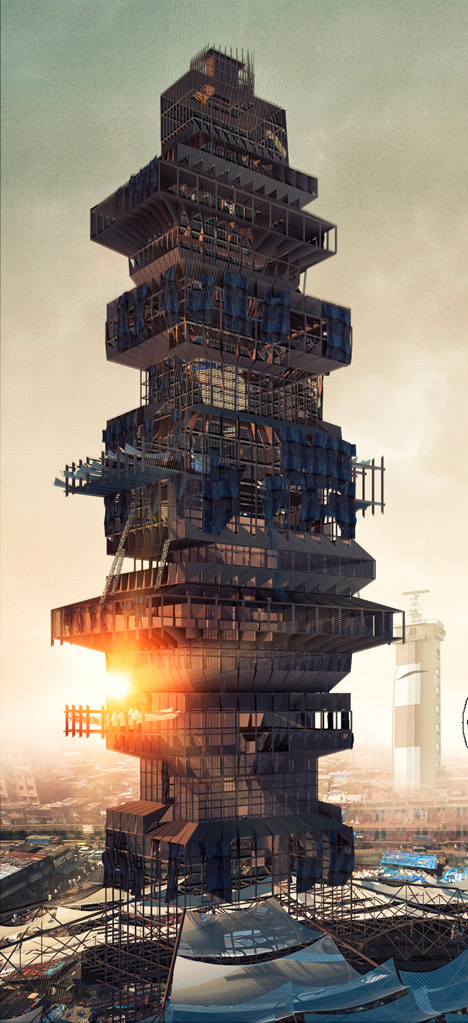
Shanty-Scraper
Second prize was awarded to Suraksha Bhatla and Sharan Sundar of India for a project entitled Shanty-Scaper, which imagines a building made from construction debris including pipes, reinforcement bars and corrugated metal sheets.
According to the designers, the structure could offer an alternative form of housing to the inhabitants of a slum in the Indian city of Chennai. "Chennai city's Nochikuppam slum is home to 5,000 fishermen families living in less than 1,500 shanties making it the third largest slum dwelling amongst the Indian metropolises," they said.
Shanty aerial view
"Informal settlements and the paucity of land parcels can no longer be ignored and the complexities of resettlement will force slum dwellers themselves to build higher using locally available, structurally sound, recyclable materials, accommodating themselves into organised communities."
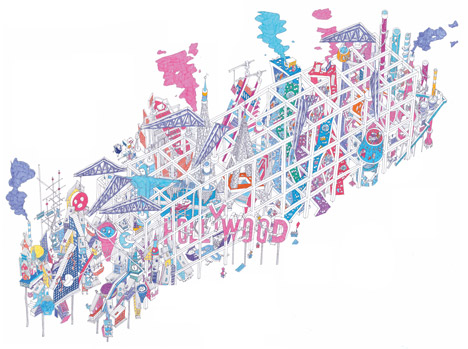 Cybertopia
Cybertopia
Egor Orlov of Russia took third prize for an intricately drawn proposal for a complex city that combines the digital and physical worlds, and can grow and adapt in response to changing needs. Named Cybertopia, the concept includes a massive framework on which cranes can move, in order to build and move different blocks.
"'Tomorrow' we expect a completely different topography of the city," he said. "It will be a map which includes cyber worlds with intrinsic geography, laws of physics, qualities and even its own residents. It is as though landscapes of computer games have woven into the city space becoming its integral part."
Honourable mentions were awarded to 15 other entrants, from a giant balloon that can regulate the climate, to a structure that helps preserve threatened species, and a biosphere inside a Giza pyramid in Egypt.
Previous winners of the annual prize include proposals for huge buoyant umbrellas that rebuild polar ice caps and a skyscraper that stores and disperses water from high within the Himalayan mountain range.



